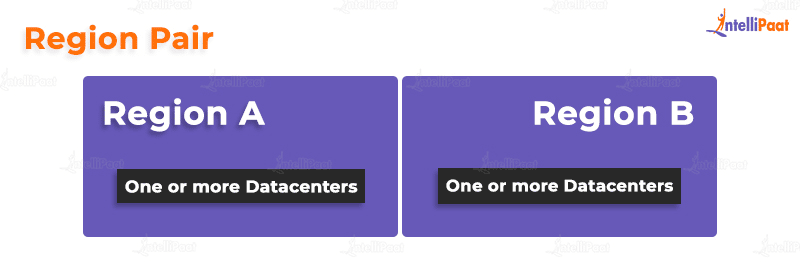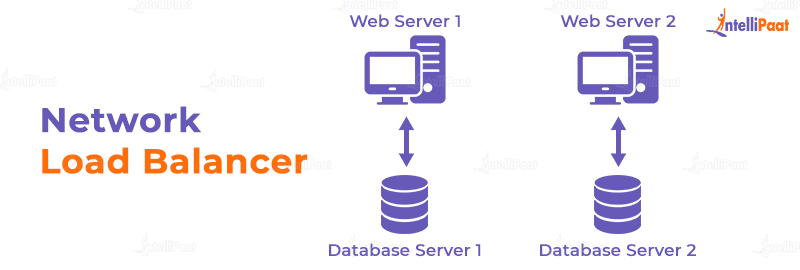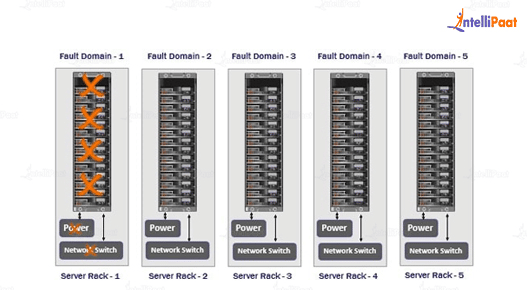Azure Availability Set vs Availability Zone in Azure
What are Azure Data Centers?
First, we need to understand What is an Azure Data Center.
An Azure data center is a distinct physical facility that houses a huge number of physically located servers. In addition, it is associated with the Energy, Conditioning, and Connectivity setups. These data centers are found everywhere in the world.
There are already more than 160 Azure data centers located in different countries. Microsoft believes that keeping the data centers in precise locations as a secret due to privacy concerns. These data centers serve as the foundation for the global Azure architecture.
Table of Contents:
- What is Azure Region?
- What are Azure Region Pairs?
- What is Azure Availability Set?
- Update Domains and Fault Domains in an Availability Set
- What are Availability Zones in Azure?
- Difference between Azure Availability Set vs Availability Zone
- Conclusion
Want to Azure from the basics, here’s a video for you:
What is Azure Region?
Let’s take a quick departure to talk about the Azure Region.
An Azure Region is a collection of Data centers interconnected by specialized limited networking.
How many data centers does a region contain?
Well, we don’t have a set amount. It changes based on the areas that range in size. It should be clear by now that an Azure Region is a collection of one or even more Azure Datacenters. Throughout the world, Azure has 60 regions as per records.
Want to learn Azure from the experts, here’s a Golden Opportunity for you to enroll in Azure Training Course.
What are Azure Region Pairs?
The words ‘azure regional pair’, ‘paired regions’, and ‘region pair’ are all synonymous and refer to a single entity, namely a pair of Azure Regions. Therefore, two areas that are parts of similar geography make up a regional pair.

The image shows that Azure Geography exists at the apex of our organization. Azure geography is a region of the planet that encompasses one or more Azure Regions, as we’ve mentioned previously.
United States, India, Europe, and the Asia-Pacific region are some of the illustrations of Azure Geographies.
To guarantee business continuity and catastrophe recovery, most geographic zones are coupled (BCDR). These are a few examples of azure-region paired areas.
| Geography | Region-1 | Region-2 |
| Canada | Canada Central | Canada North |
| Japan | Japan East | Japan West |
| India | Central India | South India |
| Germany | Germany West Central | Germany North |
Are you preparing for the Azure Interview, here’s a chance to crack like a Pro Top Azure Interview Questions!
What is Azure Availability Set?
A logical arrangement for separating the capabilities of different virtual machines is called an Availability Set.
Azure ensures that the virtual machines included in an availability set are distributed among many network switches, storage systems, actual servers, and compute racks.
Only certain Virtual Machines are affected if there is a software or hardware breakdown, while the rest of the service continues to function. Setting up availability sets is crucial for creating trustworthy cloud services.
Assume that we have a straightforward two-tier web application. We have a web server located on one of the virtual computers, and a database server on another virtual machine.
We now have two web servers and two database servers so that we can handle and process more requests.
Web applications with growing markets, like Google.com, bing.com, and flipkart.com, may have a large number of web servers and database servers in the real world.
Let’s continue with only two web servers and two database servers for the sake of simplicity in our example. The load balancer splits up the traffic coming between the two web servers.
Understand and master Azure skills, by taking up Azure Training Course in Bangalore.

Update Domains and Fault Domains in an Availability Set
A data center’s servers are separated into several physical and logical groupings. The logical grouping is known as the Update Domain, while the physical grouping is known as the Fault Domain.
Consider each server rack, which has fitted with its own network switch and power source, as a distinct failure domain. As a result, having 10 server racks in a data center is equivalent to having 10 separate fault domains.
You might be wondering why such a grouping is necessary at this point. Obviously, to remove the one point of failure.
Let’s take an example where there are 150 servers in a data center that are all interlinked by a single network switch and power source. What happens if that one network switch or power source malfunctions? Well, each of the 150 servers will also crash.
Therefore, every rack of servers utilizes its own power source and network switch in order to remove such a single failure point. Let’s imagine there are 100 servers in each rack.
Only the 100 servers in that rack are impacted when the power source or network switch within the rack malfunctions. The remaining 90 racks, or the remaining 900 servers, are immune.
In order to avoid having a single point of failure, servers in a data center are organized across many racks or fault domains.
A similar concept applies to updated domains. In a data center with 1000 servers, updated domains are logically divided into 100, 150, or 200 update domains. Therefore, it’s crucial to remember that an updated domain is a logical grouping.

Learn more about Azure through our Azure Tutorial
What are Availability Zones in Azure?
Azure Availability Zones are individual data centers inside Microsoft Azure, with their energy, cooling, and connectivity. Your services can be robust to breakdown or can interrupt with your core data center by executing services across different availability zones.
An Azure Region is a collection of Azure data centers spread out over a given area; Azure regions are sometimes several hundred miles apart. 140 nations presently have access to 54 Azure regions.
A real city block-sized structure, an Azure Region consists of numerous buildings, with each availability zone often located in a different one. You can operate two separate versions of your apps in each of the Azure regions’ minimum three availability zones.
Difference between Azure Availability Set vs Availability Zone
There are two primary distinctions between an availability set and an availability zone, to put it succinctly.
| Azure Availability Set | Azure Availability Zone |
| An availability set secures your Azure services from outages inside individual data centers. | An availability zone defends against breakdowns of the whole data center. |
| Service Level Agreement stands at 99.995%. | Service Level Agreement stands at 99.999%. |
Conclusion
In this blog, we hope you understood both similarities and differences between Azure Availability Sets and Availability Zones in Azure. Where both have their own boon and bane, it totally depends on the user’s demand to choose one out of them!!
If you have any queries they will be resolved on Azure Community Page!
The post Azure Availability Set vs Availability Zone in Azure appeared first on Intellipaat Blog.
Blog: Intellipaat - Blog
Leave a Comment
You must be logged in to post a comment.








